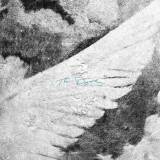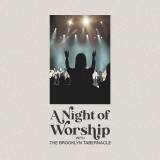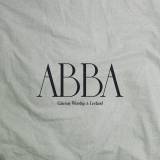Male Vocal Range!

There are many vocal
ranges and voice types for males, and this section will discuss the 4 main types of male voices, their
respective pitch ranges, unique tonal characteristics, as well as how their
tessituras or most comfortable voice ranges differ from each other.
One important point to
note:
These 2 terms – Vocal Range and Voice Type – are not to be confused with each other.
The Range of our Voice refers to the range of
notes that our voice can
reach or produce a sound at, whereas the Type of Voice refers to the various kinds
of voices classified using
certain criteria like range of vocals, tessituras, register transition points,
vocal timbre or tone and so on.
Click on the links
provided above to understand more about how to find your own vocal range, as
well as how to determine your own voice type using the various criteria!
Now, the 4 main types of
male voices are as follows:
1. Countertenor
2. Tenor
3. Baritone
4. Bass
2. Tenor
3. Baritone
4. Bass
Let us look at each of
these male voices in more detail:
1. COUNTERTENOR
The Countertenor Voice
may actually be unfamiliar to those of us not from the classical realm, as many
of us would probably only have heard of the 3 main male voices – Tenor,
Baritone and Bass.
The Countertenor voice is
the highest of the adult male
voice types, and has a vocal range that is similar to that of the Female
Contralto Voice, the lowest of the female voice types! In the Mandarin pop
scene, certain singers like Jeff Chang and the lead singer of popular pop rock
band Soda Green would probably qualify as countertenor voices!
An approximate Countertenor Vocal Range would be from a G note below the
middle C (G3) to a high F one octave above the middle C (F5). Be sure to
support your voice well with your breath so as to get a more accurate
representation of the range in your voice. Check out the section on ‘How
to Find Your Singing Range and to
get some tips on finding your range on your own!
Also, the Tessitura or most comfortable singing range for
Countertenors lies above that
of the Tenor and other adult male voices. The Countertenor voice would
usually be able to sing the high head voice notes with great ease and brightness in tone,
and would often be confused by many listeners with regular female voices.
2. TENOR
The Tenor Voice is the highest of the main male vocal
types that most people would
be familiar with, with the typical
tenor vocal range lying
between the C note one octave below middle C (C3) to the C note one octave
above middle C (C5)! This means that it would lie just slightly below the
Countertenor voice, but has similar characteristics in the sense that the Tenor
would also be able to sing most high notes with ease and vocalize the head voice notes with
strength and brightness!
The Tenor voice would
probably transition into his middle voice around the D or E note above middle C
(D4 or E4) and shift into head voice around the F sharp or G above middle C (F4
or G4). The tenor tessitura would lie between that of the Countertenor’s and
the Baritone’s. Do make sure that we avoid certain common singing problems like
jaw tightness when we attempt to find out where our vocal register transitions
lie, as this will affect the notes at which we transition, affecting the voice
type we may classify ourselves to be!
Famous Tenor voices
include the 3 Tenors – Luciano
Pavarotti, Jose Carreras and Placido Domingo, as well as other classical singers
like Enrico Caruso and pop singers like Elton John, Stevie Wonder. In the
Mandarin pop scene, JJ Lin Junjie and Jay Chou would probably be considered
Tenor voices too!
3. BARITONE
Most men would have a
vocal range similar to that of a Baritone voice, as this is the most common of
the male voice types! A typical
Baritone Voice Range would be
between the A flat note one octave below the middle C (A Flat 2) to the A flat
note above the middle C (A Flat 4).
The Baritone Voice would
transition into middle voice somewhere around the A or B note just below middle
C (A3 or B3), and move into head voice somewhere at the D or E note just above
middle C (D4 or E4). Also, the baritone tessitura would lie somewhere between
the Tenor and the Bass tessituras, and the baritone voice would be strongest in
the middle range pitches.
Famous Baritones include
John Charles Thomas, Lawrence Tibbett, Leonard Warren and Robert Merrill. In
the Mandarin pop scene, the iconic Andy Lau would qualify as a baritone singer.
4. BASS
The Bass Voice is the lowest of the male voice types.
It is also quite rare to find a good bass voice, which means that bass singers
will be very much in demand in choirs and also in A Cappella groups! Famous
Bass singers include Barry White, James Morris and Samuel Ramey.
Bass singers would be
strongest in their low voice, with a deep
and dark booming quality to
his voice, somewhat like how a sub woofer speaker may sound! The Bass voice would have a vocal range of between
the F note 1 octave below the middle C (F2) to the E note just above middle C
(E4). He would also have a tessitura or most comfortable voice range that is
lower than the Baritone’s.
The Bass voice would
probably transition from chest voice to middle voice somewhere around the A or
A flat note just below the middle C (A3 or A Flat 3), and then shift into head
voice somewhere around the D Flat note just above middle C (D Flat 4).
Understanding more about
the 4 main male voice types
and their vocal ranges helps
us to be able to understand more about our own voice as well as which voice
type we may belong to. Knowing our voice type will help us to determine the
various keys or pitches with which to do our vocal warmups before we sing, so
as to achieve maximum desired effect!
Male Vocal Range!
 Reviewed by Admin
on
10:00:00 PM
Rating:
Reviewed by Admin
on
10:00:00 PM
Rating:
 Reviewed by Admin
on
10:00:00 PM
Rating:
Reviewed by Admin
on
10:00:00 PM
Rating:
















Post a Comment